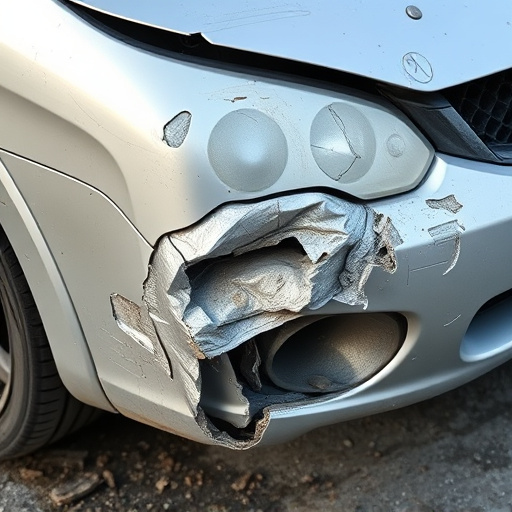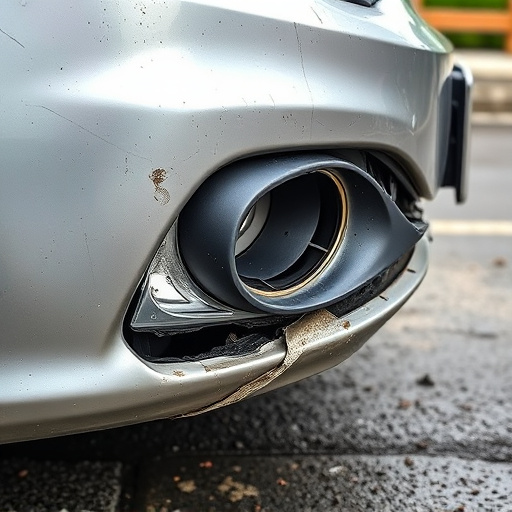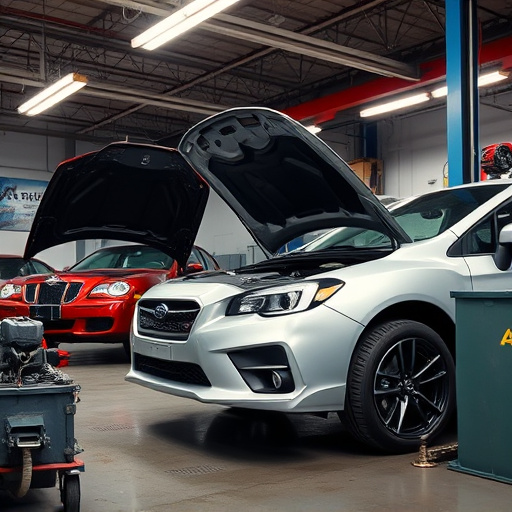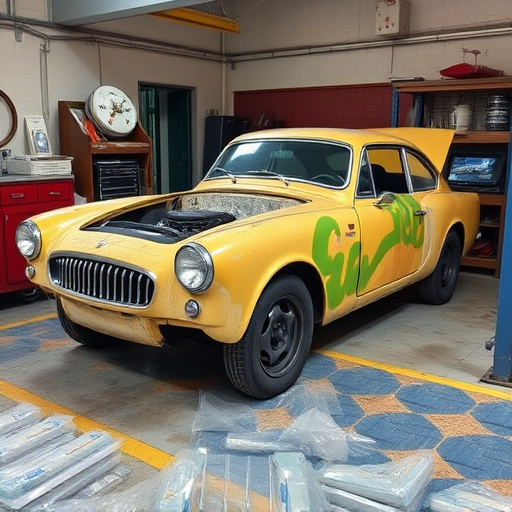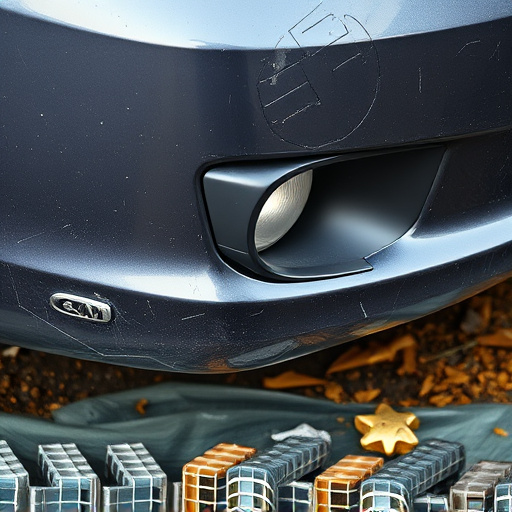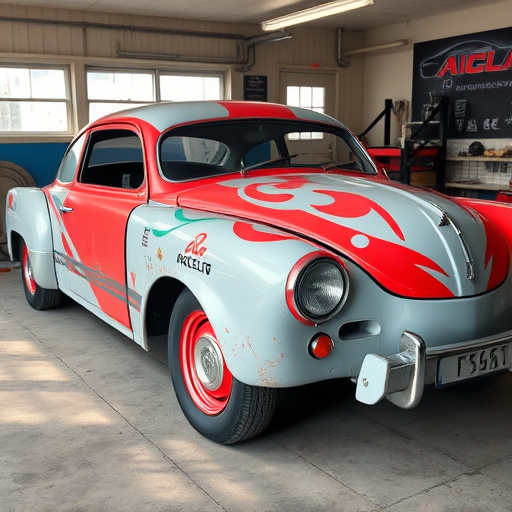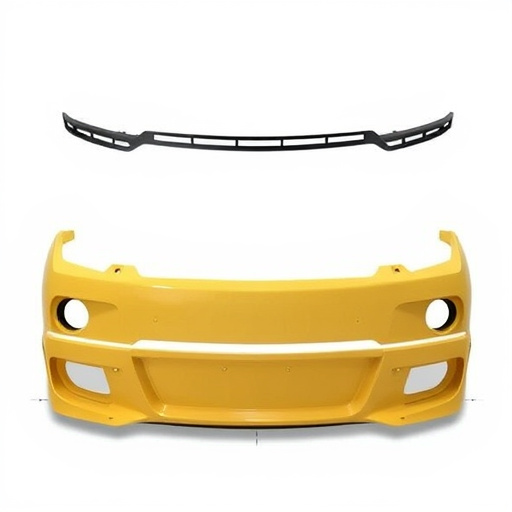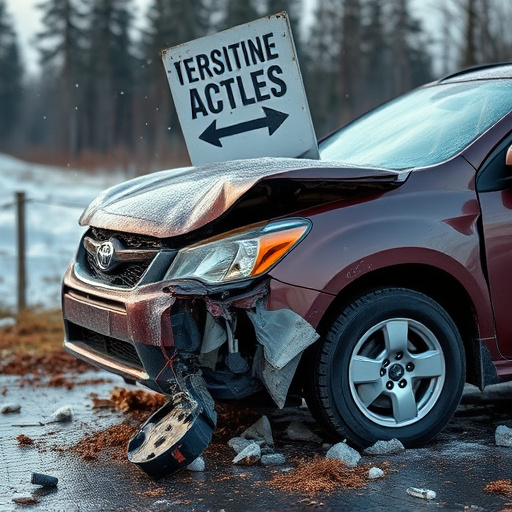Understanding Tesla's rigorous totaled vehicle assessment process is crucial for owners navigating claims after flood or fire damage. This involves thorough inspections by authorized technicians who evaluate every component from electrical systems to frame straightening, ensuring safety and performance standards are met. The assessment accounts for both visible and latent damage, guiding decisions on repair, replacement, or salvage based on structural integrity, core components, age, maintenance history, and cost-effectiveness.
After a flood or fire, determining the fate of your Tesla can be stressful. This article guides you through Tesla’s totaled vehicle assessment process, offering insights into how damage from water and flames is evaluated. We’ll explore restoration options versus total replacement, empowering you to make informed decisions for your prized electric vehicle. Learn about the criteria used to classify a Tesla as totaled and discover steps to maximize its resale value in case of severe damage.
- Understanding Tesla's Totaled Vehicle Assessment Process
- Evaluating Flood and Fire Damage: A Comprehensive Look
- Restoration vs. Replacement: Making the Right Decision for Your Tesla
Understanding Tesla's Totaled Vehicle Assessment Process

When a Tesla suffers flood or fire damage, understanding the totaled vehicle assessment process is crucial for owners navigating the claims journey. Tesla has a meticulous approach to evaluating these damaged vehicles, employing a comprehensive series of steps that include thorough inspections and advanced diagnostic tools. The company prioritizes safety and authenticity, ensuring each car’s condition is accurately assessed before any decisions are made.
This process involves multiple stages, from initial damage appraisal to detailed reporting. Technicians at authorized Tesla service centers or car repair shops perform meticulous frame straightening and dent repair where needed, aiming to restore the vehicle to its pre-incident state. Throughout this process, every aspect of the car’s functionality is meticulously examined, with a focus on identifying any hidden damage that could impact performance or safety. This rigorous assessment ensures that only vehicles meeting Tesla’s high standards are considered for potential rehabilitation, reflecting the company’s commitment to quality and customer satisfaction.
Evaluating Flood and Fire Damage: A Comprehensive Look
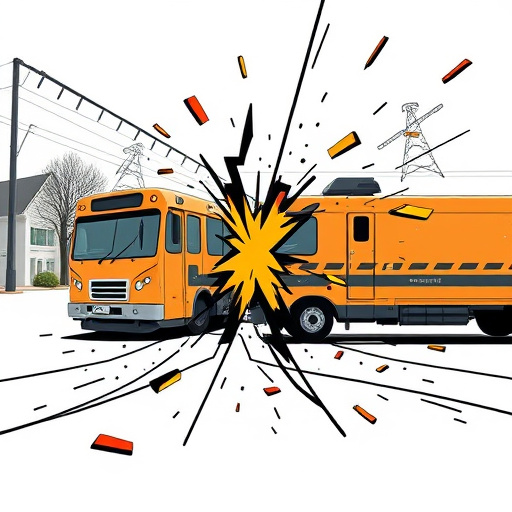
Evaluating flood or fire damage to a Tesla involves a meticulous process known as a totaled vehicle assessment. This comprehensive evaluation goes beyond superficial appearances to assess the structural integrity and functionality of every component. Trained professionals employ advanced diagnostics to identify hidden issues, from electrical systems to intricate computer modules. A thorough inspection includes checking for water intrusion, corrosion, and functional abnormalities that could compromise safety and performance.
This process leverages specialized tools and expertise in auto body repairs and restoration. Techniques such as dent repair and precise body shop services are employed to restore the vehicle’s exterior to its pre-incident condition. By focusing on both visible and latent damage, a complete Tesla totaled vehicle assessment ensures that any potential risks or long-term effects are accurately accounted for, allowing for informed decisions regarding repair, replacement, or potential salvage.
Restoration vs. Replacement: Making the Right Decision for Your Tesla

When a Tesla suffers flood or fire damage, the decision between restoration and replacement can be daunting. A totaled vehicle assessment from a qualified mechanic is crucial in this scenario. They can help determine if the structural integrity and key components of the car are salvageable. If substantial damage has occurred, including to the frame, electrical systems, or interior, it might be more sensible to consider replacing the vehicle rather than opting for extensive restoration, which could prove costly and leave hidden issues.
Restoration, often involving fender repair and car paint services, can be appealing as it allows one to keep their beloved Tesla. However, in severe cases, it’s not always feasible or financially prudent. A thorough inspection should consider the age of the vehicle, its historical maintenance records, and the estimated cost of repairs versus the value of a like-new replacement model. Making an informed decision based on these factors ensures that you’re left with a safe, reliable vehicle without overspending.
When dealing with flood or fire damage to a Tesla, understanding the totaled vehicle assessment process is crucial. This comprehensive guide has explored how Tesla evaluates such damages, emphasizing the importance of a detailed inspection. Whether restoration is feasible or replacement is necessary, making an informed decision ensures you receive fair compensation for your vehicle. By knowing what factors contribute to a Tesla’s assessable value, owners can navigate this complex process with confidence and ensure they get the most for their damaged vehicle.
